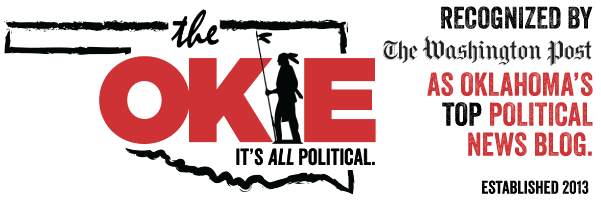Dorman’s Open Door Policy: The Oklahoma State Budget, Part 2
Editor’s note – this is the second in a three part series looking at the Oklahoma State Budget
Open Door Policy – The Oklahoma State Budget, Part 2.
By Joe Dorman
It is the time of year when many watch with anticipation what will be proposed in the most impactful piece of legislation considered at the Oklahoma State Capitol – the annual state budget. Last week, we looked at tax cuts, tax credits and fee increases. This week, we shall review other budget influences.
We face a $611 million shortfall in a state budget of about $7 billion. Many pundits view a shortfall as an ideal time to make cuts to what they view as a bloated government budget. Few of these critics actually pinpoint suggestions along with this criticism. Rarely will you hear a person who says we need to reduce the size of government actually provide a valid suggestion for elimination. Even when they do suggest something, it is usually one example that is a fraction of the budget.
Federal funds significantly prop up the Oklahoma budget. The percent of our budget coming from the feds went from 29% in 2001 to 36% in 2012. Federal money per person went from $1,022 in 2001 to $1,963 in 2012, according to the Census Bureau.
Oklahoma has been willing to accept federal education, transportation, disaster assistance and other health care funds, but refused to implement Medicaid expansion. Expansion covers persons slightly above the current Medicaid rate, generally considered the working poor. More than 180,000 Oklahomans in minimum wage jobs would qualify and the feds provide 90 percent coverage of these costs. The savings will far surpass this 10 percent cost share with improvements to health, less time off work, and maintaining medical jobs across Oklahoma.
Last year, legislators raided agency reserve funds to reduce the $180 million shortfall we were experiencing then. It has been publicized this will occur again this cycle. Additional dollars will also likely be drawn from the Rainy Day Fund, the state’s savings account.
Three years ago, I requested a list of these revolving funds, the amount in them and their mission. I never received the information. When agencies do not provide the data when requested by legislators, this is a problem. Term limits have hampered the ability of legislators to do their job, but that is an entirely different subject for another day.
The range of raided accounts helped avoid significant cuts to agencies, but left a strain on others, such as the Health Care Authority. Many healthcare providers reduced services or increased fees to Oklahomans due to reimbursement cuts. With an economy that is increasingly stressed, more will qualify for a variety of government assistance, such as unemployment, which is up in 76 of our 77 counties. Funding for these assistance programs is unlikely to increase.
Oklahoma cannot accumulate debt with our constitutional balanced budget amendment, but bond issues are treated differently. Bonds can usually only be used for programs such as construction. A bond was passed last year to repair the crumbling state capitol building with terms paying the interest over a period of years. Additional repairs for this and other projects must also be addressed soon. This includes various state-owned buildings, such as our prisons and the Oklahoma History Center.
As you can tell, there is more to the budget than just money coming in from tax collections and then going out to fund programs. All these pieces must be considered when crafting our state budget. In the next column, we will review proposed reforms.
Joe Dorman is a former state representative who served House District 65. He was the 2014 Democratic nominee for Governor.

